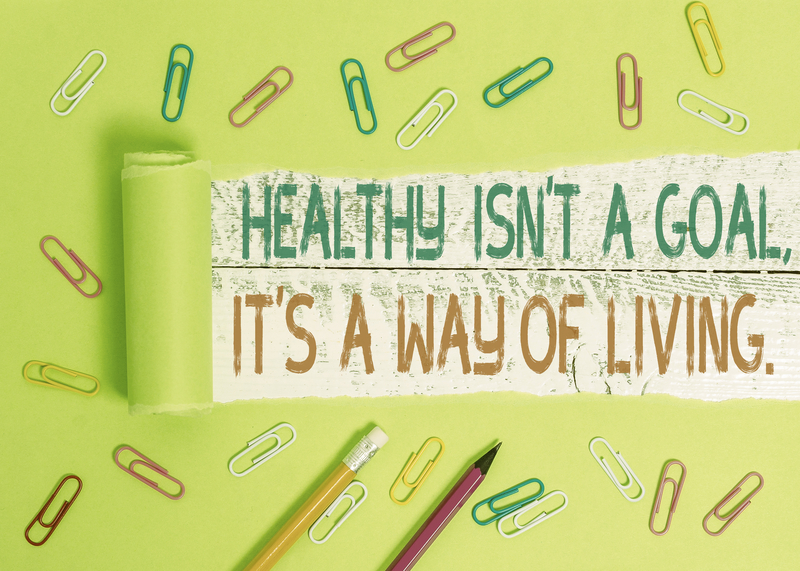Author: Gerry Acuna
Calling All Employers to Support Mental Health
August 15, 2022

According to the American Psychological Association’s (APA) 2022 Work and Well-being Survey, eight in 10 U.S. workers say they would prefer to work for companies that provide support for mental health concerns. Of the employees surveyed, 71 percent believe employers are more concerned about the mental health of their employees now than in the past.
When asked to select from a list of a dozen possible supports that they would like to see employers offer, flexible work hours were the most chosen support at 41 percent of workers, followed by a workplace culture that respects time off at 34 percent, the ability to work remotely at 33 percent, and a four-day work week at 31 percent.
Potential Benefits of Supporting Mental Health
- Increased productivity: Research shows that nearly 86 percent of employees treated for depression report improved work performance. Also, treatment of depression has been shown to reduce absenteeism and presenteeism (lost productivity occurring when employees are not fully functioning in the workplace because of an illness, injury, or other condition) by 40 to 60 percent.
- Increased retention: In a 2019 survey of more than 1,500 employees nationwide, more than a third of the respondents said they had left a job due at least in part to mental health. Of these, 59 percent said mental health was the primary reason.
- Decreased health care and disability costs: According to the National Alliance on Mental Illness, rates of cardiovascular and metabolic diseases are twice as high in adults with serious mental illness. The connection between physical health and mental health prompted the American Heart Association to release a report called Mental Health: A Workforce Crisis. It urges employers to provide comprehensive programs for the prevention and treatment of mental illness. The report found that the cost of doing nothing is higher than investing in evidence-based prevention and treatment.
Ways to Support Employee Mental Health
With these findings in mind, employees should consider implementing the following five ways to support employee mental health:
1. Understand how mental health impacts your employees.
- Make mental health training mandatory for your company’s leaders to help them be more aware of and invested in this aspect of their employees’ well-being.
- Train managers on what to do if they see signs of emotional distress or substance abuse.
- Use mental health calculators to estimate the prevalence and associated costs of untreated depression and alcohol and substance abuse at your workplace.
- Consider using surveys such as the Work Limitations Questionnaire and the Brief Job Stress Questionnaire to measure how your employees’ health and stress levels affect their productivity.
2. Include mental health coverage as part of your health care plan.
- Learn about the Mental Health Parity and Addiction Equity Act. It requires insurance coverage for mental health conditions, including substance use disorders, to be no more restrictive than insurance coverage for other medical conditions.
- Avoid plans that offer “phantom” mental health coverage. And find out how many psychologists and psychiatrists are in-network.
- Provide a health savings account (HSA) to help offset out-of-pocket costs.
3. Establish an employee assistance program (EAP).
Many companies use an employee assistance program (EAP) to support workplace mental health. While some employees may be reluctant to use this resource due to fear of stigma, shame, and lack of understanding about how these confidential programs work, you can take the following actions to increase EAP usage:
- Provide direct access to mental health professionals via phone or in person.
- Offer this resource to employees as well as to their immediate family members.
- Make it easy for employees to know with whom to talk or where to go to access mental health resources.
- Emphasize that your EAP can be accessed confidentially and free of charge.
4. Use communication to reduce stigma and increase access to mental health resources.
- Don’t wait until open enrollment to mention mental health benefits and community resources. Promote them frequently, such as in monthly newsletters.
- Ensure that your executives mention emotional well-being every time they talk about recruiting talent and building an inclusive culture that helps employees bring their best selves to work.
- Offer workshops so employees can learn more about mental health and resilience.
5. Promote well-being.
- Build as much flexibility as possible into all employees’ schedules.
- Offer access to apps that can help with sleep and stress reduction.
- Consider offering a meditation room, mindfulness training, or yoga classes at work.
- Encourage employees to use their vacation time. Some companies do this by limiting the number of vacation days employees can roll over into the next year.
- Provide accommodations and develop a return-to-work process so that employees who need to take a leave of absence because of a mental health issue feel supported when they come back.
And finally, create opportunities for employees to build connections with one another, such as through social events, affinity groups, and social media platforms.
APA Survey Conclusions
The APA survey shows that the U.S. currently has a workforce that seeks improvements to mental health support at work. While the pandemic may have exacerbated stressors among workers, particularly those in marginalized communities, it also provided an opportunity for employers to take action to prioritize employee well-being.
InsureYouKnow.org
Whether you are an employer or an employee, you can support mental health coverage as part of your company’s health care plan. At insureyouknow.org, you can document healthcare benefits that cover your mental health concerns, a list of the healthcare providers with whom you visit, and a record of prescriptions you take for physical and mental health issues.
Sticker Shock in the Grocery Aisles
July 31, 2022

Unless you go out to eat or get take-out for every meal you consume, you can’t avoid buying groceries—even if you have them delivered to your doorstep. With inflation at the highest rate it has been in 40 years, you’ve surely noticed that prices continue to rise in the grocery aisles.
If you want to stabilize your grocery bill and make your budget go further in your fight against price inflation, try some of the following money-saving strategies when you face your next grocery trip or delivery.
Check Your Pantry and Freezer
Before you go grocery shopping, check the shelves of your pantry and freezer. By taking inventory of what you already have at home, you’ll avoid buying multiples of the same item. You might be able to shorten your grocery list and spend less.
Choose Store Brands Over Name Brands
Name brand groceries are usually priced higher than their store brand counterparts. Many times, you might not be able to tell the difference between the two. With prices going up, switch to generic brands to lower your grocery spending.
Buy in Bulk
While you’ll pay more money upfront for groceries in larger quantities, it’s a smart move to buy in bulk. Typically, you’ll pay less per item and you’ll have staples on hand that may allow you to do less grocery shopping throughout the month.
Cut Back on Meat
Cutting back on meat will have a significant impact on your grocery bill because beef, pork, and chicken tend to be some of the more expensive items in your shopping cart— inflation or not. Going meatless a day or two a week and turning to cheaper alternatives, like beans and lentils, can help you cut costs.
Plan Meals
Planning your meals and making grocery lists based on a meal plan will prompt you to be less likely to waste money on something that looks appealing in the store, but you might not need for the family meals and snacks you prepare at home.
Consider Substitutions
Using substitute items can result in cost savings without sacrificing the quality or taste of the meal. For example, fruits and vegetables that are not in season tend to be more expensive. Using different produce in meals than a recipe calls for may enhance and not compromise a recipe.
Minimize Food Waste
Reduce food waste by making a grocery list and sticking to it; buy frozen instead of fresh; rethink sell-by dates if food still looks and smells fresh; freeze meats, bread, and vegetables that you aren’t going to use immediately.
Store Items Where You Can See Them
Keep items where you can see them, and you’ll be more likely to use them. An organized refrigerator and a neatly arranged pantry can help you quickly find and use items.
Learn to Preserve or Can Foods
You can pickle, preserve, or can foods—all options gaining popularity. These practices have been around for centuries and have helped folks survive harsh winters and economic downturns. With a little upfront investment of time and money, you can acquire the tools necessary to preserve seasonal foods. This can prolong their shelf life and reduce food waste and costs.
Sign Up for Loyalty Programs
Most grocery stores offer loyalty programs that are free to join. You can benefit from discounts that automatically get applied to your cart at checkout or you can get access to exclusive coupons on their apps.
Getting free items, including food offerings, from a local Buy Nothing Group means you can bypass high prices at a store—and you don’t even have to offer up anything in exchange. These groups focus on sharing rather than trading or bartering within a designated area. Join your local Buy Nothing Group on Facebook.
InsureYouKnow.org
In August, Embrace National Wellness Month
July 14, 2022

When you think about “wellness,” being physically fit may come first to your mind. During National Wellness Month in August, if you also focus on self-care, managing stress, and adopting healthy routines, you can establish lifestyle changes and add long-lasting habits to your list of wellness goals.
Practicing Self-Care
At Chopra.com, you’ll learn that self-care is simply one of the best medicines for managing stress. Self-care means the daily, weekly, and lifelong behaviors, actions, and thoughts you take to preserve or improve your long-term health and happiness.
You can make small self-care changes, including:
- Increase your water intake.
- Add more fruits and vegetables to your diet.
- Monitor your sleep and make adjustments for better sleep habits.
- Join a yoga, walking, or aerobics class.
- Learn to meditate and practice it daily.
These small steps can lead to many more healthy habits in your lifestyle.
Managing Stress
There are many healthy ways to manage stress, including:
- Recognize the things you can’t change.
- Avoid stressful situations.
- Get exercise.
- Change your outlook.
- Do something you enjoy.
- Learn new ways to relax.
- Connect with loved ones.
- Get enough sleep.
- Maintain a healthy diet.
- Learn to say no.
Adopting Healthy Routines
Physical activity is any body movement that works your muscles and requires more energy than resting. Walking, running, dancing, swimming, yoga, and gardening are a few examples of physical activity.
Being active can:
- Protect your heart.
- Improve blood flow.
- Lower blood pressure and cholesterol levels.
- Give you more stamina and the ability to cope with stress.
If you’re inactive, you’re nearly twice as likely to develop heart disease than if you’re active. Learn more about the benefits of physical activity on the National Heart, Lung, and Blood Institute website.
Keeping Track of Your Health
When you go to your healthcare provider for an annual wellness check or during the year for other medical concerns, you probably receive follow-up messages about lab test results, diagnoses, or medications recommended. Your healthcare provider keeps your medical record on file but it’s a good idea for you to maintain your personal health record.
What kind of information should you put in a personal health record? You could start with:
- Copies of your health insurance cards and vaccination records.
- Your name, birth date, blood type, and emergency contact information.
- Date of last physical.
- Dates and results of tests and screenings.
- Major illnesses and surgeries, with dates.
- A list of your medicines and supplements, the dosages, and the length you’ve taken them.
- Any allergies.
- Any chronic diseases.
- Any history of illnesses in your family.
InsureYouKnow.org
During National Wellness Month, you can save your personal health record at insureyouknow.org and keep updating it after each visit to your healthcare provider or if you have any changes in your health conditions or prescriptions.
We’re Having a Heatwave!
June 30, 2022

When you venture out of your air-conditioned comfort zone, do you immediately think, “It’s hot as Hades” outside? Extreme heat is the most dangerous type of severe-weather event in the United States. It’s easy to talk about the weather and resolve not to be able to do anything about it but you can take action to prepare for an extreme heat event. Learn what to do before, during, and after a heatwave to be safe and healthy.
Heat Emergencies
There are three types of heat emergencies: heat cramps caused by loss of salt, heat exhaustion caused by dehydration, and heat stroke. If you are experiencing any of these symptoms, get out of the heat, lie down, apply cool compresses, elevate your feet, drink fluids, and use a fan to blow cool air. Get medical help if needed.
Heat Exhaustion and Heatstroke
Heat exhaustion occurs when your body gets too hot. Untreated, this condition can lead to heatstroke when your internal temperature reaches at least 104°F. Heatstroke is much more serious than heat exhaustion. It can cause shock, organ failure, or brain damage. In extreme cases, heatstroke can kill you.
Symptoms of heat exhaustion are:
- Muscle cramps
- Heavy sweating
- Pale or cold skin
- Weakness and/or confusion
- Dizziness
- Headache
- Nausea or vomiting
- Fast heartbeat
- Dark-colored urine, which indicates dehydration
In addition to these symptoms, warning signs of heatstroke also include:
- Fever of 104°F or higher
- Flushed or red skin
- Lack of sweating
- Trouble breathing
- Fainting
- Seizures
Prevention of Heat Exhaustion and Heatstroke
There are many things you can do to prevent heat-related illnesses. Babies, children, and elderly people are more sensitive to heat and require extra attention. You are at greater risk if you are ill, obese, or have heart disease. People who work outside or in a hot setting are also at risk of heat exhaustion and heatstroke.
If possible, avoid going outside when the temperature and heat index are high. Stay indoors in air-conditioned areas. If you do need to go outside, take the following precautions.
- Wear lightweight, light-colored, loose-fitting clothing.
- Protect yourself from the sun by wearing a hat or using an umbrella.
- Use sunscreen with a sun protection factor (SPF) of 15 or higher.
- Drink plenty of water throughout the day. Dehydration and lack of salt contribute to heat-related illnesses. Some sports drinks can help replenish the salt in your body lost through sweating. Drink water or other fluids every 15 to 20 minutes, even if you don’t feel thirsty. If your urine is clear, you’re probably drinking enough fluids. Dark-colored urine is a sign that you’re dehydrated.
- Avoid alcohol and limit drinks that contain caffeine, such as tea, coffee, and soda.
- Schedule outdoor activities for cooler times of the day—before 10 a.m. and after 6 p.m.
- Take frequent breaks from the heat and outdoor activities.
- Do not stay or leave a child in your car when it is hot outside. Even if you open the windows, the intense heat can be extremely dangerous.
Certain medications can put you in danger of heatstroke. They affect the way your body reacts to heat and include some antibiotics, allergy medicines, and drugs used to manage blood pressure, cholesterol, mental health disorders, and heart disease. Talk to your doctor if you take any of these or have an ongoing health problem.
Treatment for Heat Exhaustion and Heatstroke
If you or someone near you experiences heat exhaustion, treat symptoms in the following ways.
- Get out of the heat quickly and into a cool place, or at least in a shaded area.
- Lie down and elevate your legs to get the blood flowing to your heart.
- Take off any tight or extra clothing.
- Apply cool towels to your skin or take a cool bath. This will help regulate and lower your internal body temperature.
- Drink fluids, such as water or a sports drink. Sip slowly—don’t guzzle liquids. Don’t drink fluids with caffeine or alcohol.
Call 911 if:
- Symptoms don’t improve or an affected person still has a fever of 102°F after 30 minutes of initial treatment.
- The person goes into shock, faints, or has seizures.
- The person is not breathing; begin CPR right away to try and revive them.
Living With Heat Exhaustion and Heatstroke
After you’ve had heat exhaustion or heatstroke, you’ll be sensitive to heat. This can last for about a week. It’s important to rest and let your body recover while you avoid hot weather and exercise. Ask your doctor when it’s safe to return to your normal activities.
InsureYouKnow.org
At insureyouknow.org you can keep a record of your prescriptions known to exacerbate heat-related conditions. If you do experience an emergency during a heat wave, you’ll also be able to quickly access your health insurance credentials online to help healthcare providers effectively treat you. After you recover, be sure to take recommended precautions whenever you need to endure hot weather.
Before You Step on the Gas, Plan Your Travel Strategy
June 11, 2022

The pros and cons of planning a summer road trip this year have gotten more complicated as rising gas prices threaten to make a bigger dent in your travel budget.
The national average for gasoline could be close to $6 by later this summer according to Tom Kloza, global head of energy analysis for the OPIS, which tracks gas prices for AAA.
To cut your gas costs, consider using the following tips to get more miles per gallon as you embark on the summer excursion you’ve been dreaming about all year.
Slow down.
Each 5 mph you drive over 60 mph is like paying an additional $0.15 per gallon for gas. Aggressive driving—speeding, rapid acceleration, and braking—wastes gas. Eliminate these practices and you may save $.12-$.82 per gallon for gas.
Keep your car maintained and running smoothly.
Make sure you have your car maintained before you hit the road by getting a tune up and clean air filters, inflating your tires properly, and using the proper grade of oil. Don’t fill up with premium gas if your car doesn’t require it. Before you drive, make sure your tires aren’t under-inflated. If they are, you will likely burn more fuel per mile than when your tires are correctly inflated.
Use your engine wisely.
Avoid excessive idling and use cruise control and overdrive gears.
Be smart about driving.
Plan errands to do them together, rather than on separate trips; carpool, walk, or cycle; use public transportation; and telecommute. If you’re in the market for a new car, consider buying a more energy-efficient or a smaller car.
Keep your car light.
Don’t store unnecessary items that add weight to your car. When you place cargo on the car’s roof, avoid excess weight that will put a strain on your engine and affect your fuel mileage.
Use apps to find the cheapest gas prices near you.
Stay updated on gas prices by using apps and sites like Gasbuddy.com, Waze, , AAA, and GasGuru. They help check gas prices in your location, so you can find pumps where you can save the most money.
Pay cash or use a cash back credit card.
You may be able to save about $.10 per gallon if you pay with cash at the pump. If you don’t want to deal with cash, consider opting for a cash back credit card for gas expenses.
Utilize fuel rewards programs.
Find convenience and grocery stores with gas fueling stations that offer rewards programs for a percentage off gas fill-ups based on total amounts you spend shopping in the stores.
Look forward to the future.
Although current fuel rates may take a big bite out of your travel budget this summer, trust—as in past years of 2008, 2012, and even the early 1980s—gas prices will eventually bounce back. Wisely use the gas-saving tips mentioned above to ease your way through the current high gas prices.
InsureYouKnow.org
When you travel this summer, keep records of your auto insurance, car maintenance, travel insurance, and rental car and hotel expenses at insureyouknow.org. You’ll be able to refer to these documents while you’re on the road and after you return home when you reflect on your wonderful summer vacation.
College Graduates’ Guide to Insurance
May 31, 2022

Congratulations to college graduates everywhere as the graduation season kicks off in 2022! Homework continues, however, as grads meet the challenges presented by their next decisions—changing their residences, jobs, and insurance coverages. Even though this last item may not be as exciting as finding a new place to live or pursuing a lucrative career opportunity, the following options in insurance coverages are important issues that new college grads need to address.
Health Insurance
Since the passage of the Affordable Care Act (ACA), choosing new coverage—or holding on to existing coverage—has been much easier for college graduates who may decide to:
1. Remain on a parent’s insurance plan
Before the ACA was enacted, it was common for health insurance plans to drop dependents as soon as they graduated from college. But the ACA requires almost all health plans that offer dependent coverage to allow young adults to remain on a parent’s plan until they turn 26. So, for young adults covered under a parent’s plan, graduating from college no longer requires them to quickly find new health insurance.
2. Purchase a short-term plan
Short-term health insurance is a potential alternative for college grads who need temporary coverage to tide them over until another policy kicks in. Even for grads who have a job lined up right away, employers often have a waiting period before health insurance coverage is available to new hires. Short-term plans can be purchased at any time of the year, with immediate effective dates available.
3. Buy an ACA-compliant individual plan
For new grads who want a more robust, ACA-compliant plan that covers the essential health benefits and pre-existing conditions, a plan purchased through the state health insurance exchange is likely to be an ideal solution. For more information about marketplace insurance, visit www.healthcare.gov.
4. Check Medicaid eligibility
In 38 states, Medicaid has been expanded to cover all adults with income up to 138 percent of the poverty level. In 2022, that’s $18,754 for a single individual, except in Alaska and Hawaii where the limit is higher. Medicaid enrollment is available year-round and coverage includes pre-existing conditions. In most cases, there are no premiums. For a new grad living in a state where Medicaid has been expanded, this could be a perfect solution during the weeks or months that it might take to find a job after graduation.
5. Get coverage through a new employer
College grads may be able to enroll in group coverage at their new jobs. Employer-sponsored health insurance generally offers substantial benefits, and employers typically pay a large portion of the premiums. Employee contributions are paid through payroll deductions. Participants also may be eligible to enroll in a Health Savings Account that minimizes the financial impact of out-of-pocket medical expenses.
Renters’ and Homeowners’ Insurance Policies
Before graduation, college students probably lived in a dorm room or shared housing with other students. Now, it may be time for them to relocate to their first apartment, condo, or house.
Renters need to understand that their landlord’s insurance doesn’t cover their belongings. Suppose renters experience an unforeseen situation, including burglary, stormy weather that causes a leaky roof to destroy their furnishings, or a fire that creates smoke damage. In these scenarios, they could be protected by renters’ insurance.
Homeowners’ insurance policies, available to college grads buying their first condos or houses, combine several types of coverage, including dwelling, personal property, other structures, loss of use, personal liability, and medical payments into one policy,
It’s a good idea for renters and homebuyers to create a spreadsheet with an inventory of the contents of their residences, placing approximate values on their belongings.
Auto Insurance
Upon completing college, grads may be ready to buy a new car that requires upgrading their auto insurance, especially if they had been previously covered under their parents’ policy. Personal auto insurance is a package policy providing four coverages—liability, medical payments, uninsured and underinsured motorist, and physical damage.
Life Insurance
Unless a college grad is married or has individuals, such as a child or an aging parent dependent on their income, life insurance may not be needed right away. However, if young adults are single, healthy, and in a family with a good health history, they may be at an insurability peak and would benefit from the best rates on life insurance.
InsureYouKnow.org
College graduation prompts a transition from a school-based existence to one replete with adult responsibilities, including the need to put insurance policies in place. By preparing for the unforeseen future, college grads who do their homework on insurance options and keep copies of policies, inventories of their belongings, and records of any claims submitted at insureyouknow.org, can begin living their lives to the fullest.
Shopping for SHOP Coverage
May 15, 2022

Signed into law in 2010, the Affordable Care Act changed many regulations affecting small businesses and insurance. The law established the Small Business Health Options Program (SHOP) for small employers —generally those with 1–50 employees—who want to provide health and dental coverage to their employees affordably, flexibly, and conveniently.
Qualifications to provide SHOP coverage
Find out on the HealthCare.gov website if your business or non-profit organization qualifies for SHOP by meeting the following four requirements:
1. You have 1-50 full-time equivalent employees (FTEs)
- Use the FTE Calculator to see if you qualify. Note: To qualify for SHOP, you must have at least one FTE employee other than owners, spouses, and family members of owners and partners.
2. You offer coverage to all full-time employees—generally, workers averaging 30 or more hours per week
- You don’t have to offer coverage to part-time employees—those averaging fewer than 30 hours per week—or seasonal workers.
3. You enroll at least 70 percent of the employees to whom you offer insurance
- Employees with other health coverage aren’t counted as rejecting your offer.
- Use the SHOP Minimum Participation Rate Calculator to see how many of your employees must accept.
- Some states have different minimum participation requirements. See if this affects you.
- If you don’t meet your minimum participation requirement, you can enroll between November 15-December 15 any year. During this time, the participation requirement isn’t enforced.
4. You have an office or employee work site within the state whose SHOP you want to use
- Visit this page, select your state, and see how to access SHOP insurance in your state.
- See what to do if your business operates in multiple states.
- If eligible, you don’t have to wait for an open enrollment period. You can start offering SHOP coverage to your employees any time of year.
Reasons to offer SHOP coverage
- SHOP insurance gives you choice and flexibility to:
- Offer your employees one plan or let them choose from multiple plans.
- Offer only health coverage, only dental coverage, or both.
- Choose how much you pay toward your employees’ premiums and whether to offer coverage to their dependents.
- Decide how long new employees must wait before enrolling.
- You can get the information you need in one location. You can make an informed decision about your SHOP insurance options with the tools at HealthCare.gov where you can compare plans and prices and find out if you qualify for SHOP.
- You can use your current SHOP-registered agent or broker or find an agent or broker in your area to help you enroll in coverage.
- You may be able to get the Small Business Health Care Tax Credit. Enrolling in SHOP insurance is generally the only way for eligible small employers to take advantage of the Small Business Health Care Tax Credit. You may qualify if you have fewer than 25 FTE employees making an average of about $56,000 or less. See how much your business could save. Updated IRC guidelines for small business health care tax credit and the SHOP marketplace can inform you if you are a small employer.
InsureYouKnow.org
Whether you are an employer or an employee in a small business, you may find it helpful to review SHOP coverage how-to guides, fact sheets, tools, and other resources. After making SHOP health insurance decisions, you can keep your records about the best plan for you and its costs, benefits, and features at insureyouknow.org.
Drought Eased by Rain and Your Call to Action
May 1, 2022

Is it raining today or is rain in the forecast this week? Rain can bring relief to drought—a prolonged period of abnormally low rainfall, leading to a shortage of water. Droughts can last a single season, a whole year, or for many years, and can affect a few hundred or millions of square miles.
Public health implications of drought include concerns about water, food and nutrition, air quality, sanitation and hygiene, recreational risks, and infectious and chronic diseases.
Water
Reduced stream and river flows can increase the concentration of pollutants in water and cause stagnation that kills fish and other aquatic life. Many parts of the United States depend on groundwater as a primary source of water. Groundwater sometimes contains naturally present germs and harmful chemicals from the environment, such as arsenic and radon. More often, human activities contaminate groundwater.
What Can You Do? Learn to correctly use fertilizers and pesticides; maintain septic systems; properly remove or store wastes; and prevent chemical spills at work sites.
Food and Nutrition
Drought can limit the growing season and create conditions that encourage insect and disease infestation in certain crops. Low crop yields can result in rising food prices and shortages, potentially leading to malnutrition.
What Can You Do? Whether you grow your vegetables or buy them at a farmer’s market or grocery store, select drought-tolerant vegetables specifically bred for drought resistance. Popular choices include lima beans, pole beans, corn, mustard greens, okra, squash, Heatwave II tomatoes, Black Diamond watermelons, and most herbs.
Air Quality
The dusty, dry conditions and wildfires that often accompany drought can harm your health. Fire, combined with dry soil and vegetation, increases the number of particulates suspended in the air, such as pollen, smoke, and fluorocarbons that can irritate the bronchial passages and lungs, making chronic respiratory illnesses like asthma, bronchitis, and bacteria pneumonia worse.
What Can You Do? Learn about CDC’s EXHALE strategies to help people with asthma achieve better health: Education on asthma self-management; X-tinguishing smoking and exposure to secondhand smoke; Home visits for trigger reduction and asthma self-management education; Achievement of guidelines-based medical management; Linkages and coordination of care across settings; Environmental policies or best practices to reduce asthma triggers from indoor, outdoor, or occupational sources.
Sanitation and Hygiene
Having water available for cleaning, sanitation, and hygiene reduces or controls many diseases. Drought conditions create the need to conserve water, but conservation efforts should not prevent proper sanitation and hygiene.
What Can You Do? Your attention to personal hygiene, cleaning, hand washing, and washing of fruits and vegetables can be done in a way that conserves water and reduces health risks. Install low-flow faucet aerators in your business and home to reduce water consumption while maintaining hand washing and other healthy hygienic behaviors.
Recreational Risks
If you engage in water-related recreational activities during drought, you may be at increased risk for waterborne disease caused by bacteria, protozoa, and other contaminants such as chemicals and heavy metals.
What Can You Do? The best way you can prevent swimming-related illnesses from spreading is to keep germs out of the water in the first place. This means that if you or your child has been sick with diarrhea in the past two weeks, you should stay out of the water. To protect yourself from the most common swimming-related illnesses, keep water out of your mouth when you swim and dry your ears after you swim.
Infectious Disease
Increases in infectious disease can be a direct consequence of drought. Viruses, protozoa, and bacteria can pollute groundwater and surface water when rainfall decreases. If you get your drinking water from a private well or if you have an underlying chronic condition, you may be at higher risk for drought-related infectious disease.
What Can You Do? To prevent the spread of acute respiratory and gastrointestinal illnesses from person to person, be diligent in handwashing. If you get your drinking water from a well, check it at least every spring to make sure there are no mechanical problems and test it once each year for total coliform bacteria, nitrates, total dissolved solids, and pH levels. If you suspect other contaminants, you should test for those as well.
Chronic Disease
Conditions associated with drought may negatively impact people who have certain chronic health conditions such as asthma and some immune disorders. Drought-related changes in air quality, such as increased concentrations of air particulates and airborne toxins resulting from freshwater algal blooms, can irritate the eyes, lungs, and respiratory systems of persons with chronic respiratory conditions.
What Can You Do? By making healthy behavior part of your daily life, you may prevent the exacerbation or occurrence of chronic disease conditions. Heed warnings about adverse weather conditions and stay indoors, avoid strenuous outdoor activities, and take prescribed medications. Talk to your health care provider if symptoms worsen.
Diseases Transmitted by Insects and Animals
In periods of limited rainfall, both human and animal behavior can change in ways that increase the likelihood of vector-borne diseases. During dry periods, wild animals are more likely to seek water in areas where humans live. These behaviors increase the likelihood of human contact with wildlife, the insects they host, and the diseases they carry.
Stagnant water provides additional breeding grounds for certain types of mosquitoes that can transmit the West Nile virus to humans.
What Can You Do? If you collect rainwater, don’t let the water get stagnant and become a manmade mosquito breeding area. Dump out any standing water, including in outdoor pet bowls and flowerpots. Pick up litter—bottles, cups, cans, car tires, and other containers that can hold water—on your property. Keep your lawn free of overgrown trees, brush, weeds, and tall grass. Plant mosquito-repelling herbs, flowers, and plants, including peppermint, lavender, marigolds, and feverfew.
InsureYouKnow.org
Your portal at insureyouknow.org is an ideal place to keep track of your home insurance and maintenance records, annual surveys of your property, and records of repairs and purchases needed for water resources, including septic systems or wells.
Before You Take a Deep Breath Outside This Spring
April 15, 2022

You’ve got cabin fever and spring weather is beckoning you to enjoy the great outdoors. Before you venture forth–even if it’s just to your backyard—curtail allergic reactions to pollen that may cause you to have hay fever and start to sniffle and sneeze.
Causes and symptoms
The biggest spring allergy trigger is pollen from trees, grasses, and weeds that release tiny grains into the air to fertilize other plants. When these particles get into the nose of someone who’s allergic, they send the body’s defenses into high gear.
The immune system mistakenly sees the pollen as a danger and releases antibodies that attack the allergens leading to the release of histamines into the blood. Histamines are chemicals that trigger a runny nose, itchy eyes, dark circles under your eyes, and other symptoms that are familiar if you have allergies.
Pollen counts tend to be particularly high on breezy days when the wind picks up sneeze-inducing grains and carries them through the air. Rainy days wash away allergens.
Being inside may protect you from windblown pollen, but other seasonal triggers, such as mold and dust mites, can be prevalent inside your house and cause allergic reactions.
Diagnosis
Start with your primary physician who may refer you to an allergist for tests. An allergy specialist may give you a skin test, which involves either pricking the surface of the skin with a tiny amount of allergen or injecting a tiny sample of a diluted allergen under the skin of your arm or back. If you’re allergic to the substance, a small red bump (called a wheal or hive) will form. You may also undergo a blood test to detect and measure the allergen-specific antibodies in your blood.
Treatments
Many over-the-counter and prescription drugs can ease the symptoms of allergies. They include:
- Antihistamines reduce sneezing, sniffling, and itching by lowering the amount of histamine in your body.
- Decongestants shrink blood vessels in the nasal passageways to relieve congestion and swelling.
- Antihistamine/decongestant combos combine the effects of both drugs.
- Nasal spray decongestants relieve congestion and may clear clogged nasal passages faster than oral decongestants without some of the side effects.
- Steroid nasal sprays ease inflammation and are the preferred initial treatment.
- Eye drops relieve itchy, watery eyes.
- Immunotherapy gives you gradually increasing doses of the allergen until your body can handle it. The treatment can relieve your symptoms for a longer time than other types of allergy medications. Although it doesn’t work for everyone, it can stave off some people’s symptoms for a few years.
If you feel like you need over-the-counter antihistamines and decongestants for more than a few days, ask your doctor to recommend an effective regimen, which may include:
- Prescription medications, including steroid nasal sprays,
- Allergy shots, or
- Under-the-tongue immunotherapy tablets.
Some natural and alternative remedies for allergies that may ease your symptoms include:
- Nasal irrigation, a way to rinse your nasal passages with saline solution
- Butterbur, an herb from a European shrub that shows potential for relieving seasonal allergy symptoms
- Acupuncture, a technique in which practitioners stimulate specific points on the body—most often by inserting thin needles through the skin
Talk to your doctor before you start any herbal product or alternative treatment. Some can cause side effects or react with medications you take.
InsureYouKnow.org
After you choose and try allergy remedies, keep track of your selections and effectiveness at insureyouknow.org. On this handy portal, you’ll also be able to retain health insurance coverage records, details about office visits and allergy tests, and dates of prescriptions so you’ll know when you need refills to prevent seasonal allergies from interrupting your spring activities.
Step Right Up to a Safety Program at Your Workplace
March 31, 2022

With more people transitioning to a post-pandemic work environment and returning to work in person, employees and employers may need to review their workplace safety plans to prevent injuries and reduce the high cost of insurance claims. According to the Occupational Safety and Health Administration (OSHA), “The main goal of safety and health programs is to prevent workplace injuries, illnesses, and deaths, as well as the suffering and financial hardship these events can cause for workers, their families, and employers.”
OSHA’s recommended practices use a proactive approach to managing workplace safety and health. Traditional approaches are often reactive—that is, problems are addressed only after a worker is injured or becomes sick, a new standard or regulation is published, or an outside inspection finds a problem that must be fixed. These recommended practices recognize that finding and fixing hazards before they cause injury or illness is a far more effective approach.
Create a workplace safety plan
Both management and employee involvement are needed when creating a safety plan. If employees are involved in identifying and resolving safety and health problems, they will bring their unique insights and energy to achieving the goals and objectives of a safety plan. Employees are the most valuable assets of a company. Their safety, health, and goodwill are essential to the success of a business.
Employers and employees can take the following steps to create a comprehensive workplace safety plan:
- Identify risks and potential hazards in your workplace. After you’ve identified the risks in your business environment, make sure all employees understand the risks associated with their positions.
- Learn your industry’s compliance standards. As the government agency charged with setting and enforcing standards of safe and healthful working conditions, OSHA frequently updates its rules for individual industries, so it’s important to stay on top of the regulations for your industry.
- Develop programs and processes. You’ll need to create clear guidelines for your employees to promote a culture of health and safety at your company. Employee job descriptions should be clear and in writing, discussing individual responsibilities related to health and safety.
- Seek input on workplace changes. Before making significant changes to the workplace, work organization, equipment, or materials, consult with workers to identify potential safety or health issues.
- Make improvements. Set aside a regular time to discuss safety and health issues, to identify ways to improve the program.
- Educate your employees. Training sessions should be held whenever a new hire is made, or when new processes, procedures, or equipment are introduced to the workplace. Be sure to teach employees how to identify hazards, prevent accidents, and respond to injuries. Display posters as reminders of your company’s safety procedures and priorities and include workplace safety procedures in your employee handbooks.
- Enforce and evaluate your safety plan. If your employees aren’t on board with enforcement, you’ll have a tough time implementing any changes in your safety and health policies. Routine safety audits and annual training sessions are effective ways to begin enforcing safety rules.
- Be prepared for inevitable injuries. Even after you have established a safety plan, an accident might occur in your workplace. Devise a plan to relocate your employees when they’re injured and have contact information at the ready for your occupational medicine and workers’ compensation providers.
Include psychological challenges in safety concerns
The American Psychological Association (APA) proactively supports employee productivity and mental wellness that strengthen overall organizational performance through reduced turnover and decreased health care costs.
APA’s perspective involves five interconnected domains:
- Employee involvement empowers staff by involving them in decision-making and providing autonomy.
- Work-life integration provides flexibility around when, where, and how staff work.
- Employee growth and development expand employees’ knowledge and skills and help develop their careers.
- Employee recognition rewards employee contributions.
- Health and safety maximize staff health by preventing, assessing, and treating potential risks and encouraging healthy behaviors.
Employers will find that implementing OSHA’s recommended practices and APA’s interconnected domains also brings other benefits. Safety and health programs help businesses:
- Prevent workplace injuries and illnesses
- Improve compliance with laws and regulations
- Reduce costs, including significant reductions in workers’ compensation premiums
- Engage workers
- Enhance their social responsibility goals
- Increase productivity and enhance overall business operations
InsureYouKnow.org
After you’ve established a safety and health program at your workplace, you should be all set on being safe and sound at work. But, if you do experience a mishap and need to file a claim for worker’s compensation or disability insurance, keep track of your medical records and insurance details at insureyouknow.org.
